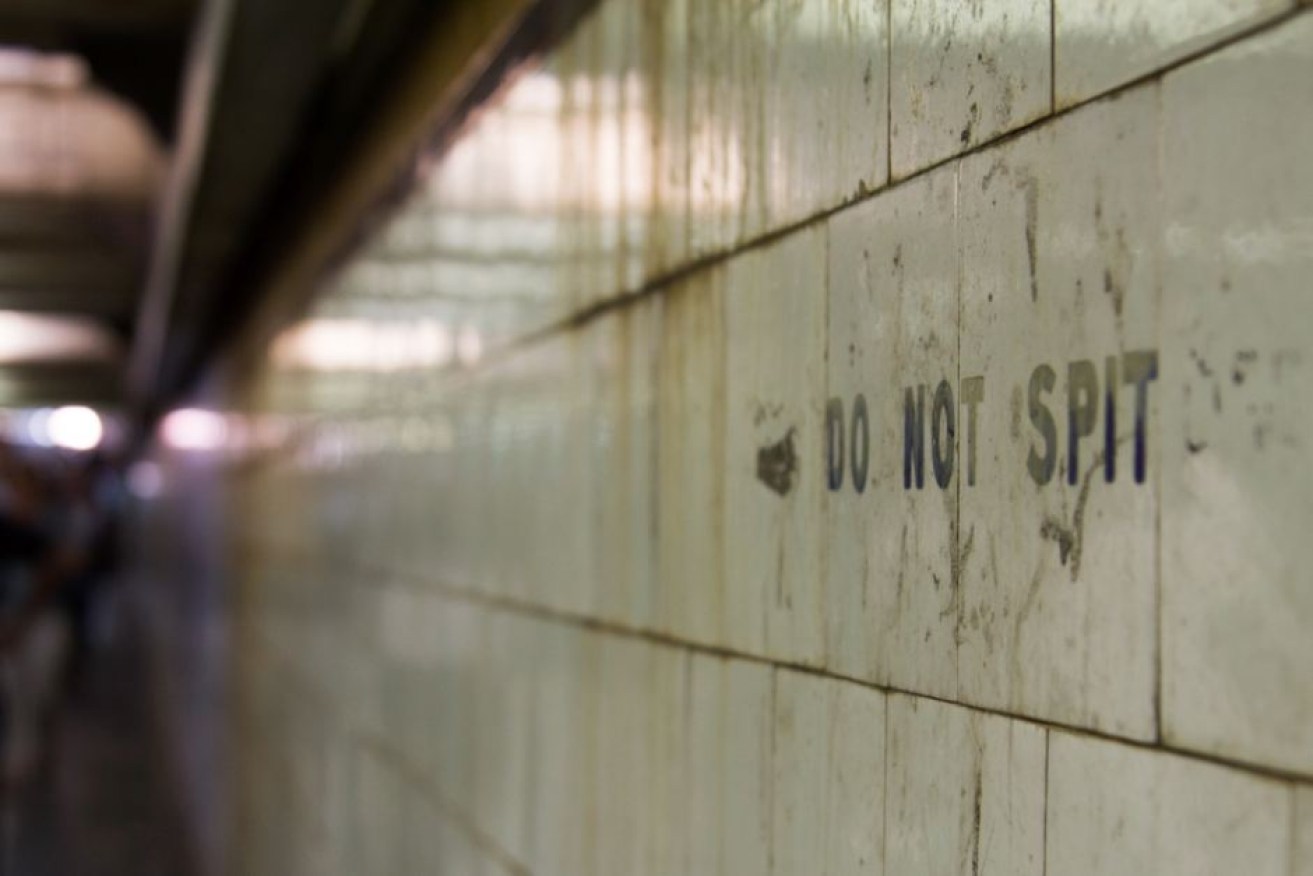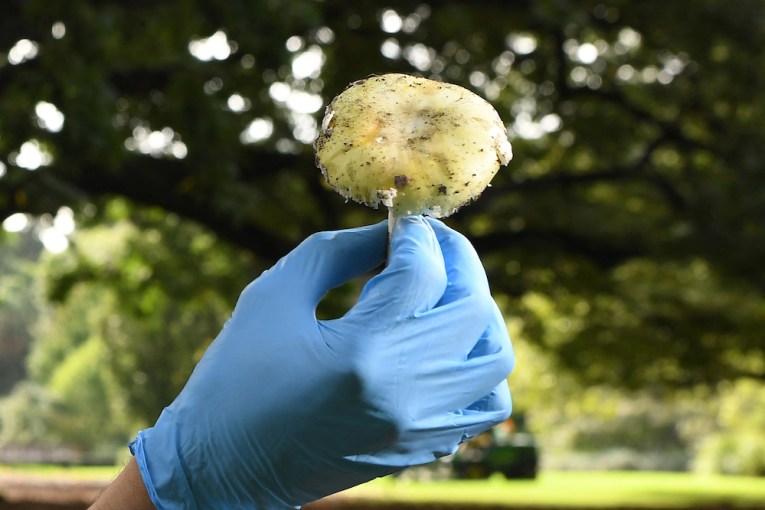‘Do not spit’ signs at Flinders Street Station to survive $100 million new-millennium makeover

Flinders St Station's 'do not spit' signs will survive the station's $100 million revamp. Photo: ABC
Every day, commuters trudging through Flinders St Station’s grimy Elizabeth St pedestrian tunnel are greeted by faded signs with a blunt message: do not spit.
They are relics of a century-old public health campaign, but fans of old signage will be pleased to know that the signs are here to stay.
The signs are hand painted in blue on the tiled walls of the ageing passageway which, new toilets aside, is yet to be touched by an ongoing $100 million upgrade of the iconic Melbourne railway station.
The underpass runs between Flinders St and the Yarra River, and is used by thousands of commuters every day.
A spokesperson for Public Transport Victoria (PTV) said there were no plans to remove the signs as part of any refurbishment of the tunnel.
Spitting common in 1800s
Unlike “no smoking” signs, notices asking the public not to spit are not commonplace today.

Anti-spitting posters were being produced in Victoria as late as the 1950s. Photo: Museum Victoria
While most modern Melburnians would consider spitting in public to be pretty gross, it was not always as frowned upon.
Andrew May, professor of history at the University of Melbourne and author of Melbourne Street Life, said in the 1800s people spat simply because it was quite acceptable to do so.
“People in Melbourne pretty well spat their way through the 19th century without worrying about it too much.”
Dr May said 1800s society was a lot more open to “expectorating or passing wind, or coughing and sneezing in public”.
“Public urination was a big problem too in the 19th century city and it was completely common to walk down some of the byways in the city and the suburbs and see people urinating against fences.”
Science vs spit
Then, Dr May said, at the turn of the century, Melbourne City Council became concerned about spitting because of recent scientific discoveries.
“They’re worried about tuberculosis which is a fairly endemic disease in the 19th century, sometimes called consumption,” he said.
In 1882, Robert Koch had discovered the microorganism that caused consumption and the way it was spread through things like spitting and coughing.
“That alerted medical authorities globally that there were ways that you could prevent and contain the spread of tuberculosis, by stopping people spitting,” Dr May said.
Paris banned spitting in 1886, New York in 1896, Sydney in 1900 and Melbourne in 1903.
“Flinders St Station was built between 1901 and 1910, right at that moment when the spitting issue comes more in public focus.”
Move on, boys
The new bylaw may have also been put to use moving-on undesirable characters because spitting was part of “the larrikin anti-social repertoire”.

City of Melbourne bylaw 108 also banned the littering of fruit and vegetable matter. Photo: Public Record Office Victoria
While the meaning of the word larrikin has softened, Dr May said at the time it referred to “gangs of louts” who would hang around in groups outside pubs, railway stations, post offices and Town Hall.
“One of the things that they used to do was spit everywhere and it was a very commonly noted problem in the press at the time,” Dr May said.
In a letter to the editor of the Argus in 1907, reader LL Lewis bemoaned that the “do not spit” signs around the city were being routinely ignored.
“One has only to walk up Queen St, Bourke St or Collins St, in the morning or afternoon, to see the disgraceful state the footpaths are in,” they wrote.
Traces of the past
Dr May said there was great nostalgia among the public for faded old hand-painted signs, which are also known as ‘ghost signs’.
“There is a resurgence of interest in [old] signage, and it’s great,” he said.
“It’s another slightly ephemeral, but material way that traces of the city’s past are seen in the present.
“I do think that people are quite fascinated by them.”
-ABC








